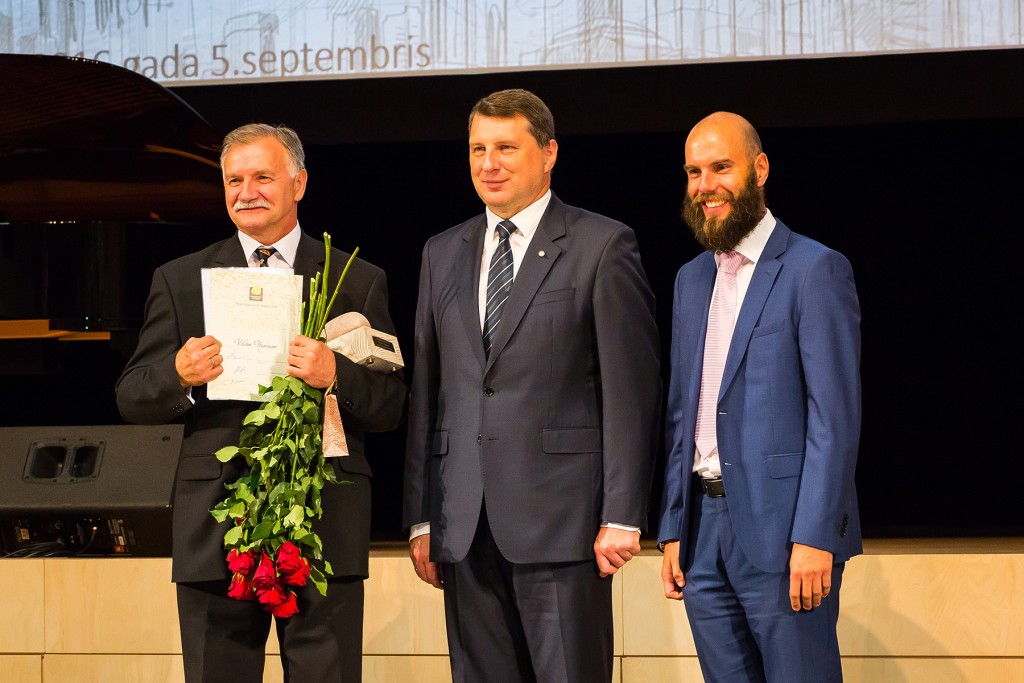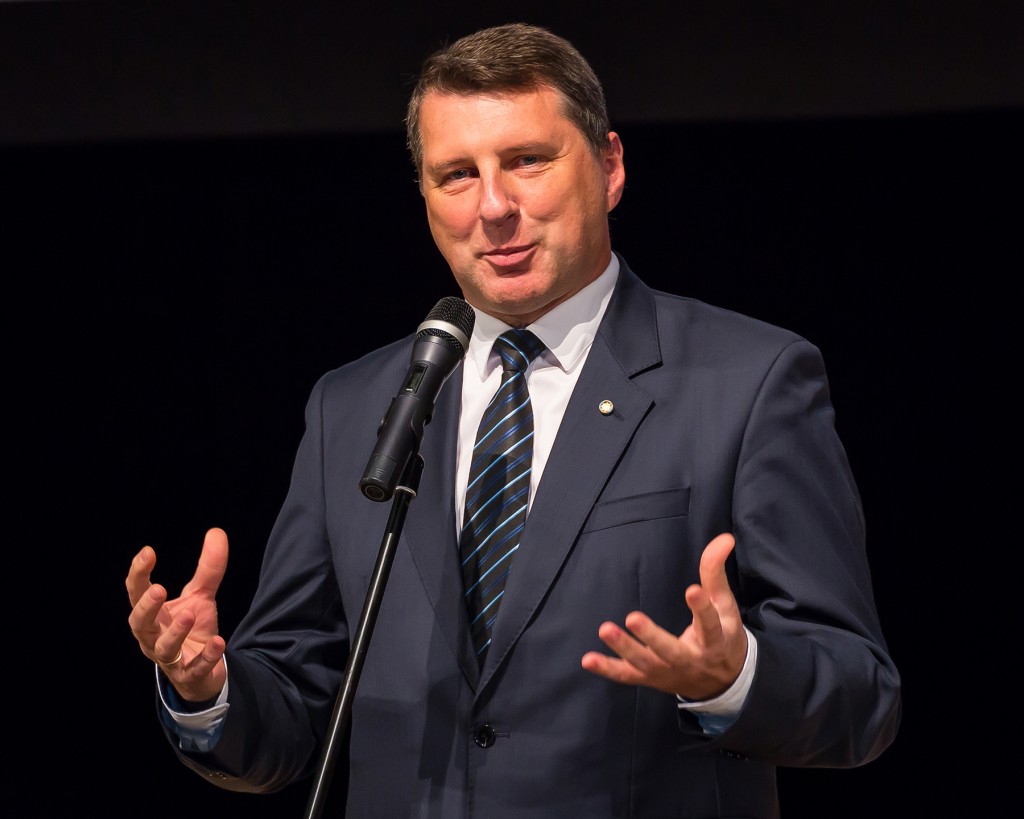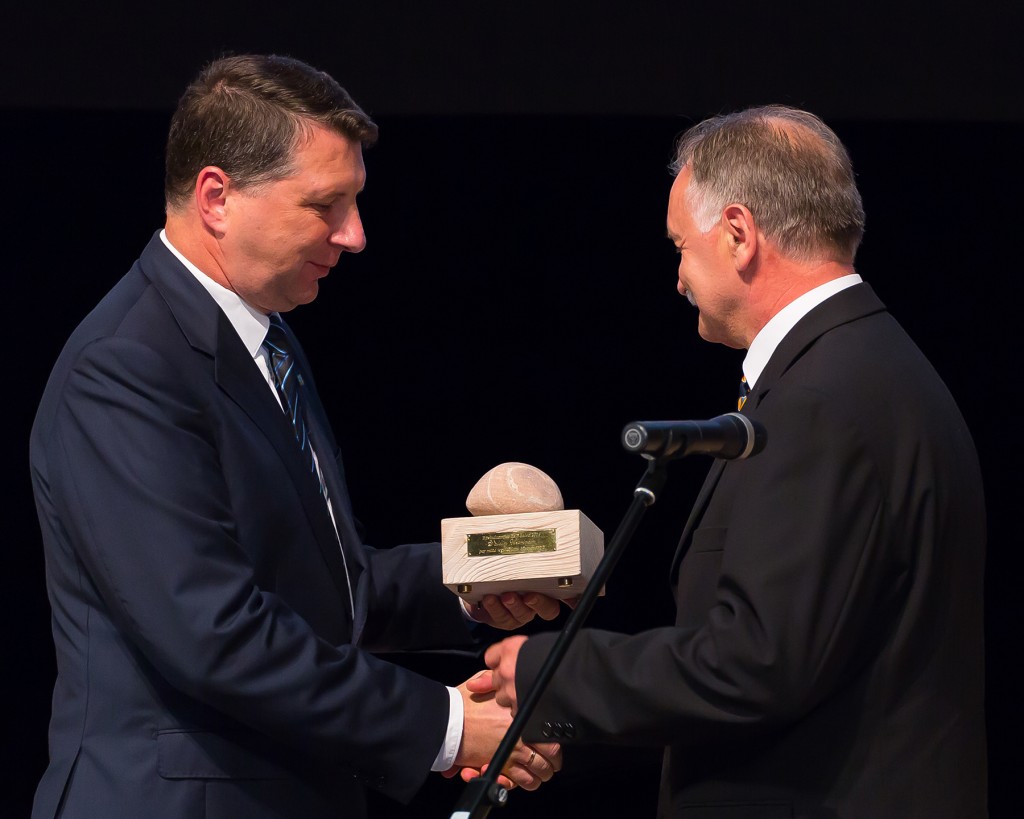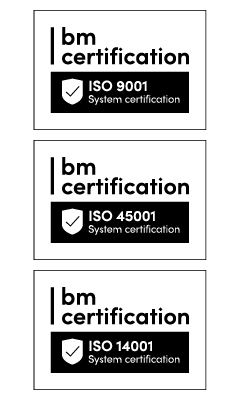5 September 2016, President of Latvia Raimonds Vejonis (Raimonds Vējonis) presented the Grand Prize of the construction industry to the member of the board of AS “Būvuzņēmums Restaurators” Valdis Uzarins (Valdis Uzariņš) for the lifelong contribution in the area of restoration.
Presentation of the “Grand Prize of the Construction Industry” (“Būvindustrijas lielā balva”) is organized by the Latvian Association of Civil Engineers and the most-read industry magazine “Būvinženieris” in collaboration with other professional non-governmental organizations of the construction industry. Latvian President Raimonds Vejonis is a patron of award, other co-operation partners being the Ministry of Economics and the Ministry of Environmental Protection and Regional Development. This time the award ceremony took place in the premises of the National Library.
In 2016 “Grand Prize of the Construction Industry” was awarded in two categories: “The Lifelong Contribution in the Construction Industry” and “Architect/Engineer of the Year”, which includes categories “Engineer of the Year”, “Architect of the Year”, “Young Architect of the Year” and “Young Engineer of the Year”. A total of 12 laureates (six in each category) received the main prize “The Keystone» (“Pamatakmens”) and other valuable prizes. The declared candidates have been assessed by the professionals of the construction industry who are recognized in society and among colleagues.
This award is a gratitude from the industry and the best builders throughout Latvia, highlighting the recipients of the prize in the category “Lifelong Contribution in the Construction Industry”, who taught many young masters.
Awards “Grand Prize of the Construction Industry 2016” were presented by the President of Latvia Raimonds Vejonis, Minister of Environmental Protection and Regional Development Kaspars Gerhards, the parliamentary secretary of the Ministry of Economics Vilnis Kirsis (Vilnis Ķirsis), vice-president of the Lithuanian Association of Civil Engineers Vincentas Stragis and other representatives of the industry.
President of Latvia Raimonds Vejonis said at the award ceremony: “The Grand Prix of the construction industry, the highest award the industry, is being presented to those professionals that the industry can be proud of, that are its keystones. The high award highlights the skillful teacher, the competent customer, the creative architect, as well as the intelligent designer, the talented builder and producer of building materials and the careful building custodian”.
Minister of Environmental Protection and Regional Development Kaspars Gerhards said that there are outstanding builders throughout Latvia, as evidenced by buildings in the regions and by the fact that the rewards will leave for different corners of our country.
In turn, the Prime Minister’s Comrade and Minister of Economics Arvils Aseradens (Arvils Ašeradens) expressed confidence that “the construction industry plays an important role in the socio-economic development of Latvia, it affects the lives of both an individual and society, creates a logistical base for other industries of the national economics and clearly illustrates economic development of the state”.
Valdis Uzarins, who got an award for the lifelong contribution in the construction industry, built his career as a professional engineer in restoration at AS “Būvuzņēmums Restaurators” and put a lot of work in the restoration of various historic sites in Latvia. In 1974, when he started working at the company as a concreter, the first object on which he worked was restoration of the Riga St. Peter’s Church.
Since that time more than four decades have passed, during which Valdis has not only improved his knowledge as a restoration engineer and slowly walked to the post of member of the board of the oldest and largest restoration company in Latvia, but also continued to work on the restoration of the most important cultural and historical state monuments. In addition, for at least 12 years, he also directed the AS “Būvuzņēmums Restaurators”.
[LBS id=1480]
Among the projects implemented under the leadership (or with his direct participation) of Valdis Uzarins, there are the foloowing:
- Restoration of the Latvian National Opera and Ballet building;
- Construction of a visitors center in the central building of the Bank of Latvia, as well as work on the restoration of the building of the Bank of Latvia (1b Valdemara Street);
- Restoration of the buildings and the plenary sessions Hall of the Seima of the Republic of Latvia;
- The restoration of the ceiling painting, the Great Hall, the Green Hall, stairs and lobby of the historic cinema “Splendid Palace” (previously – cinema “Rīga”);
- Multiple restoration works at the Riga Dome Cathedral (including restoration of the chapels finishing, as well as restoration and gilding of the cockrel and the ball);
- Restoration of the Riga Latvian Society House;
- Restoration of the Church of St. Alexander Nevsky in Riga;
- Different restoration works in the Riga Castle (White Hall restoration, restoration of chimneys, gilding works, restoration of the Cīruļa gate and others);
- Restoration of the Teter’s House (former “Corner House”) facade;
- Restoration of the terrace of Freedom Monument;
- Restoration of the facade of the historic industrial VEF building;
- Restoration of the Latvian National Theatre building;
- Restoration of polychrome painting in the Palace of Culture “Ziemelblazma” and the Great Hall of the New Town Hall in Kuldiga;
- Restoration of the interior and the facades of many buildings in the Art Nouveau on Alberta Street;
- Restoration of the Tea House in Eleja Manor;
- Restoration of the facade of the District Court building in Kurzeme;
- Reconstruction of historical Kolonade building;
- Restoration of fleurons of the Old St. Gertrude Church in Riga.
These are just some of the major sites from a large number of restoration projects that Valdis Uzarins has worked on throughout his life.
Finally, it should be noted that thanks to professional work and enormous contribution to the restoration industry of Valdis Uzarins, several generations of restorers not only were grown and taught, but also received their professional certificates.







